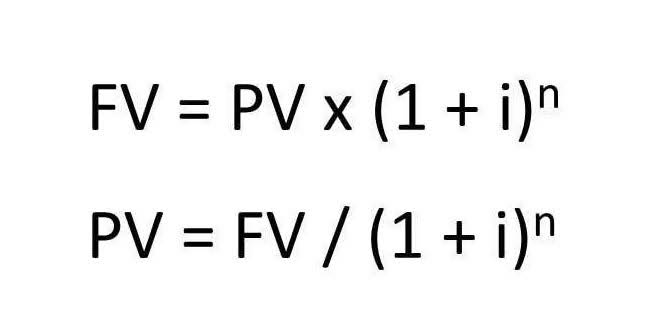What is a Contra Account? Understanding Sales Discounts and Rebates

It’s important to note that sales returns and allowances impact your gross revenue, reducing it by the amount of returns and allowances given. A liability that is recorded as a debit balance is used to decrease the balance of a liability. It is not classified as a liability since it does not represent a future obligation.
Is Sales Return an Expense?
A contra revenue account allows a company to see the original amount sold and to also see the items that reduced the sales to the amount of net sales. Generally in the financial statements the revenue account would be offset against the contra revenue account to show the net balance. In double entry bookkeeping terms, a contra revenue account or contra sales account refers to an account which is offset against a revenue account. The sales returns account contains either an allowance for returned goods, or the actual amount of revenue deduction attributable to returned goods.

Contra Liability Account: What it is, How it Works, Example
In your income statement, the gross sales of $50,000 are offset by the sales returns and allowances of $1,000. You can also record contra revenue within the sales account, but this means that it will be buried within the total amount of revenue reported, so that management cannot easily determine the amount of contra revenue. If your company has minimal contra revenue activity, it is acceptable to record these transactions within the revenue account.

Closing Entries, Sales, Sales Returns & Allowances in Accounting
The balance sheet would report equipment at its historical cost and then subtract the accumulated depreciation. For instance, if a company sells a product but later accepts it back for a refund, the sale is reversed through a contra revenue account. Similarly, discounts given at the point of sale also reduce the total revenue. It’s important to track contra revenue as it impacts the net revenue reported on the income statement, which in turn affects the business’s profitability and overall financial health. The most common contra account is the accumulated depreciation account, which offsets the fixed asset account. Taken together, the asset account and contra asset account reveal the net amount of fixed assets still remaining.

The allowance for doubtful accounts – often called a “bad debt reserve” – would be considered a contra asset since it causes the accounts receivable (A/R) balance to decline. Recording contra revenue accurately in your accounting books is crucial for maintaining reliable financial records. Let’s break down how to do this step-by-step, look at some examples of journal entries, and discuss the best practices for documentation. This topic is essential because it directly impacts how stakeholders perceive a company’s performance.
Contra accounts are used to reduce the value of the original account directly to keep financial accounting records clean. By keeping the original dollar amount intact in the original account and reducing the figure in a separate account, the financial information is more transparent for financial reporting purposes. For example, if a piece of heavy machinery is purchased for $10,000, that $10,000 figure is maintained on the general ledger even as the asset’s depreciation is recorded separately. The accurate reporting of contra revenue is integral to compliance with revenue recognition standards, such as the International Financial Reporting Standards (IFRS) and Generally Accepted Accounting Principles (GAAP). A contra account is a general ledger account with a balance that is opposite of the normal balance for that account classification.
In accounting terms, an expense is a cost incurred to produce revenue reported on the income statement. If you buy a pair of shoes from your supplier for $20, that’s a cost, but it’s not yet an expense. That’s because, as far as accounting is concerned, you haven’t really “spent” $20. You’ve just converted $20 worth of cash into $20 worth of shoes; an asset that remains in your inventory. Since you no longer have the shoes, aka the asset, you record a $20 expense on your income statement, But you also record $30 in revenue from the sale, so your net income is $10.
- This estimated liability is recorded at the time of sale, reducing the revenue recognized.
- In your financial statements, contra revenue accounts appear as deductions from gross sales to arrive at net sales.
- Instead, they are deducted directly from the revenue at the time of sale, resulting in a lower recorded sale amount.
- These less-frequent contra accounts come into play when you need to account for changes in the outstanding liabilities for your business.
- Contra revenue adjustments serve as an important tool in painting a realistic picture of a company’s sales activities.
- Similarly, if the parent account lists entries as debits, the contra account will appear as a credit.
- The Allowance for Doubtful Accounts is directly related to the asset account entitled Accounts Receivable.
Step-by-step guide on how to record contra revenue
- This distinction is particularly important for stakeholders analyzing a company’s efficiency in generating revenue before accounting for the costs of running the business.
- In accounting terms, an expense is a cost incurred to produce revenue reported on the income statement.
- It is a concept that may seem complex at first, but with a clear understanding, businesses can utilize contra revenue to provide a more accurate representation of their revenue streams.
- Charlene Rhinehart is a CPA , CFE, chair of an Illinois CPA Society committee, and has a degree in accounting and finance from DePaul University.
- Contra revenue, on the other hand, directly reduces the sales figures reported on your financial statements.
- In addition, you can examine the impact of sales discounts on increases in sales, to see if it makes sense to continue offering discounts in order to boost profits.
contra revenue account accounts appear near the top of the income statement, as a deduction from gross revenue. If the amounts of these line items are minimal, they may be aggregated for reporting purposes into a single contra revenue line item. Sales returns occur when a customer returns a product they previously purchased, a common occurrence in retail and e-commerce. As a business owner, you’ll record these returns as contra revenue because they reduce the initial sales amount reported. The treatment of sales returns in financial records is a nuanced aspect of contra revenue management. It requires a meticulous approach to ensure that the revenue reported is not overstated and that future financial projections are reliable.
